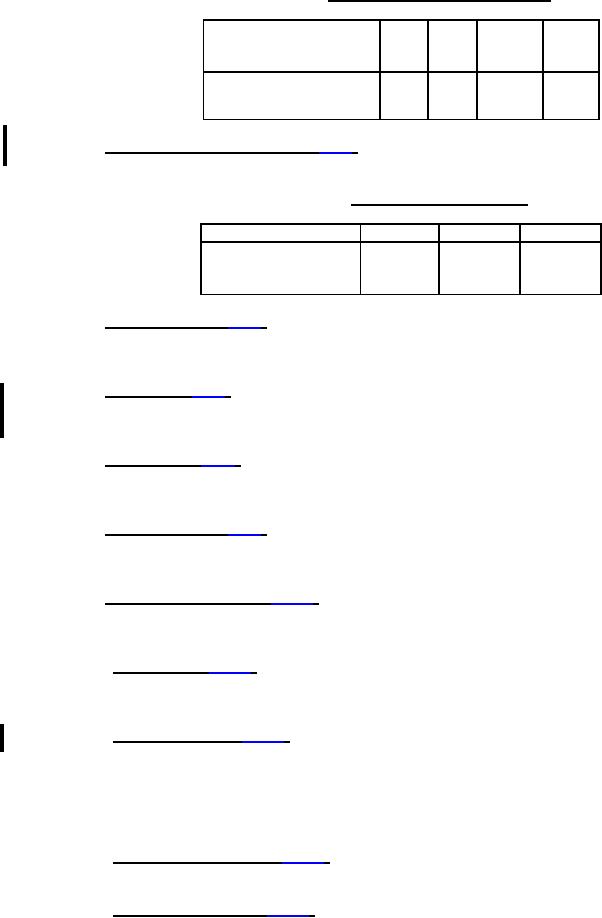
MIL-PRF-87819B
TABLE I. Speech intelligibility requirements.
Sound pressure level
of pink noise
75
95
105
115
(OASPL)(dB)
Minimum score
95
90
85
80
(percent correct)
3.5.4 Headset system sensitivity (see 4.7.5). The headset system sensitivity shall meet or exceed the
output dB SPL specified in table II for the corresponding frequencies.
TABLE II. Headset system sensitivity.
Frequency for test
400 Hz
1.0 kHz
3.0 kHz
Output in dB SPL
95.4
98.5
104
with
1 volt rms input.
3.5.5 Shock (drop) (see 4.7.6). The product shall completely resist failures due to excessive dropping
from typical-use heights onto a hard surface, showing no evidence of physical or electrical defects except
minor chipping or scratches. Following the dropping, the acoustic quality shall be as specified in 3.5.1.
3.5.6 Fungus (see 4.7.7). The product shall be constructed of fungus-inert materials and shall show no
evidence of fungus or other corrosion, which may cause a mechanical or electrical failure. For more
information, see 6.6.
3.5.7 Vibration (see 4.7.8). The product shall not exhibit loosened components or any other
mechanical failure due to the repeated application of high-frequency vibration. Following such vibration,
the acoustic quality shall be as specified in 3.5.1.
3.5.8 Temperature (see 4.7.9). The product shall not exhibit cracking or any other deformation of
major or minor components due to extremes of temperature. Following such extreme temperatures, the
acoustic quality shall be as specified in 3.5.1.
3.5.9 Temperature shock (see 4.7.10). The product shall not exhibit cracking or any other deformation
of major or minor components due to repeated and extreme changes in temperature. Following such
wide temperature swings, the acoustic quality shall be as specified in 3.5.1.
3.5.10 Humidity (see 4.7.11). The product shall not exhibit failure due to moisture or corrosion when
subjected to excessively high levels of humidity for long periods of time. Following such exposure, the
acoustic quality shall be as specified in 3.5.1.
3.5.11 Twist and pull (see 4.7.12). The terminal components (PINs U/179A, U/173, and U/174),
termination points to the earcup, and any other terminations (see 3.1) shall not part from the conductor
when subjected to excessive twisting and pulling. After twisting and/or pulling there shall be no more than
.0312 inch (0.793 mm) slippage of the cable jacket from the connector. There shall be no separation of
the bond on molded terminations, molded bend reliefs, and molded strain reliefs or any kind of slippage of
the cable from its entry into the earcup, which would create an air gap in the earcup shell.
3.5.12 Headband pressure (see 4.7.13). The headband shall maintain the specified pressure (see
3.1), when stretched to a position specified as representing the Air Force user head breadth.
3.5.13 Headband flexing (see 4.7.14). The headband force shall not degrade more than ± 10 percent
from its pressure as specified in 3.5.12, when subjected to excessive amounts of flexing from the closed
to open position.
9
For Parts Inquires call Parts Hangar, Inc (727) 493-0744
© Copyright 2015 Integrated Publishing, Inc.
A Service Disabled Veteran Owned Small Business